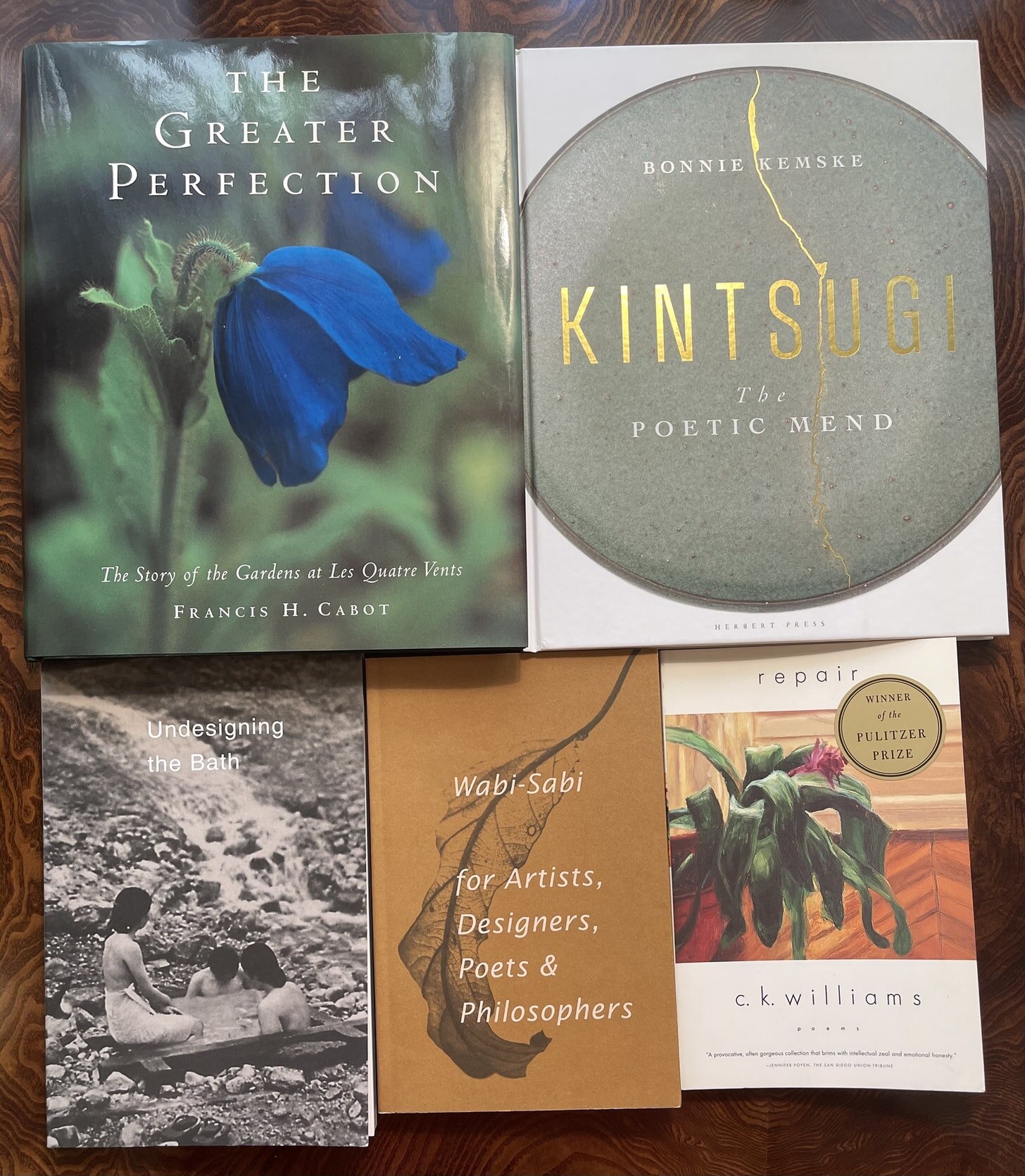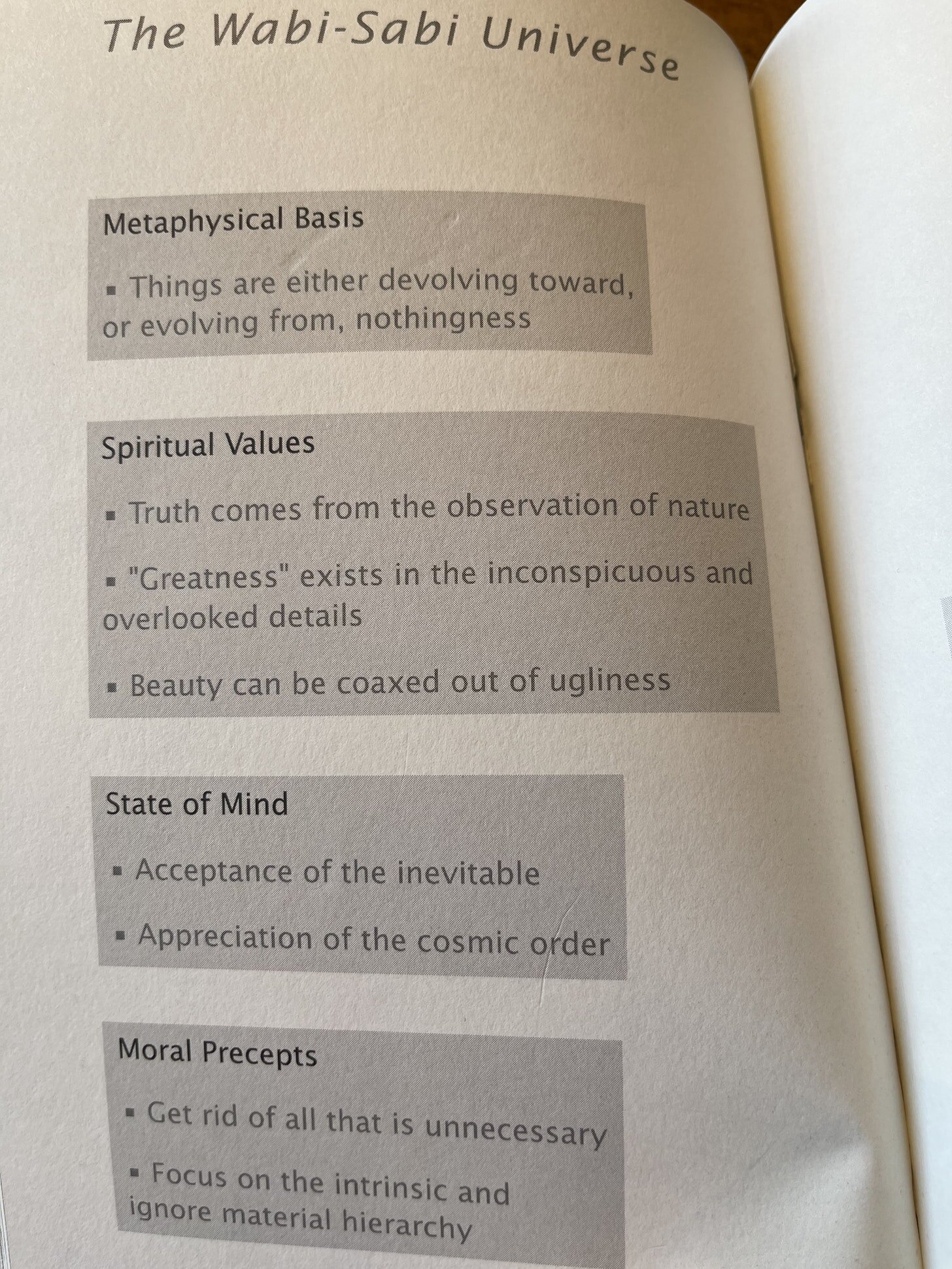Repair
“Everything that has a shape breaks”- Japanese Proverb
But…
“The world breaks everyone and afterward many are strong at the broken places”- Ernest Hemingway
And…
“Repair is the creative destruction of brokenness”—Elizabeth Spelman
Five paths to repair.
Images and words extracted from five books that offer different perspectives that anyone can draw on since none of them have to be purchased and can be integrated into every day of almost every life.
1. Poetry 2. Water 3. Wabi-Sabi 4. Kintsugi 5. Gardens.
1. Poetry
Poems restores us to what is deepest in ourselves.
Poetry finds the perfect words in the perfect order.
CK Williams in his Pulitzer Prize winning collection “Repair” writes how
‘Self-doubt is almost our definition” as we move forward with the “hesitant music” of our lives
“If I can create myself, I’ll be able to amend myself.”
“Re-establishing myself in myself like this always comes to pass”.
He celebrates “Invisible mending”.
The minds procedures of forgiveness and repair.
The greatest poetry is written at the borders of what can be said. As this stanza on persevering and resurrecting and restoring oneself through the ups and downs of life while never losing your internal melody …
“Be soft in your practice. Think of the method as a fine silvery stream, not a raging waterfall. Follow the stream. Have faith in its course. It will go its own way, meandering here, trickling there. It will find the groves, the cracks, the crevices. Just follow it. Never let it out of your sight. It will take you”. Sheng-Yang
2. Water.
Moving water is often symbolic of power and life. It can reputedly heal the sick and the lame, restore youth, confer fertility, dissolve sin, and so on.
It is an alchemy of thermal simulation that leaves one clean and pure and reconciles mind and body.
Flowing water whether it be rainfall, a stream, a river, or the tides of a lake or ocean has a certain timelessness to its biological rhythms.
From the Calm app to the music at a spa, our internal compass draws us to water as a place of rest, rejuvenation, and repair.
Even if it’s just the shower…
3. Wabi-Sabi
Wabi-sabi is a beauty of things imperfect, impermanent, and incomplete. It is a beauty of things modest and humble. It is a beauty of things that is unconventional.
It is a philosophy of repair and therefore real life for it does not have perfection or ideal as a goal
Wabi refers to a way of life, a spiritual path, the inward, the subjective, a philosophical construct. It is about “space”.
Sabi refers to material objects, art, and literature, the outward the objective an aesthetic ideal, it is about “time”.
4. Kintsugi
Kintsugi is a Japanese repair technique that takes ceramic destruction and makes a broken object into a new entity. It leaves clear bold visible lines with the appearance of solid gold. A kintsugi repair speaks of individuality and uniqueness, fortitude and resilience, and the beauty to be found in survival. Kintsugi leads us to a respectful acceptance of hardship and aging.
Kintsugi has in it the Wabi-Sabi philosophy and its belief of beauty, knowledge and humanity arising from the scars and the repairs is sung by Leonard Cohen…
Ring the bells that can still ring
Forget your perfect offering
There is a crack, a crack in everything
That’s how the light gets in…
And the philosopher Rumi…
“The wound is the place where the light enters you”
5. Gardens
In the Charlevoix region of Quebec there lies a private garden which covers more than 20 acres and is called Les Quatre Vents ( The Four Winds). It is considered amongst the finest private gardens in the world (it is opened a few times a year to the public).
The garden was created by one person, Francis Cabot, as his life work that blends creativity and passion and it is simply the most breathtaking places one can imagine.
Francis Cabot believed that gardens are like art and have the power to change you. And unlike other art, which may affect you differently over time, because you have changed over time, a garden is itself always changing. Francis designed his garden to lift the soul of people who walked through it. To help them grow and repair and heal.
He wanted us to come out different after the experience.
Here is a peek at Les Quatre Vents…
One prescription for the pressures and challenges we face is to take a walk in a garden.
Regardless, it is key to remind ourselves of Francis Cabot’s belief that every individual is creative and we have a garden within ourselves that we need to tend to so that we can heal, self-repair and always bloom…





